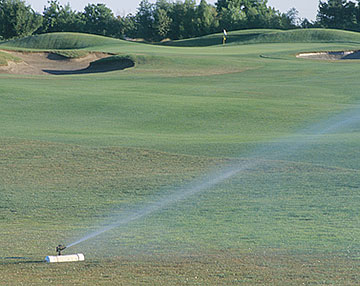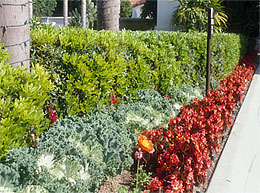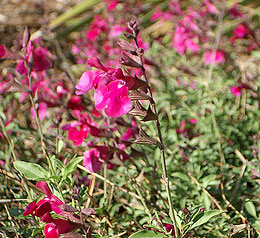Salinity Management Guide

Getting started
When selecting an irrigation system, the choice is often between some kind of sprinkler system and some kind of micro-irrigation system. A third alternative involves combining the two kinds as needed. A first step is to determine the kind best suited to the particular characteristics of your landscape.
For broad, open expanses of turf, such as those on golf courses, in large parks, and on athletic fields, sprinkler systems with gear-driven or impact-driven rotor heads are appropriate. Such systems can apply a large volume of water in a relatively short period of time.
At many sites, sprinklers are also a good method for watering beds that contain shrubs, flowers, and ground covers. For such applications, use small or moderate-size spray heads of low or moderate capacity, rather than the high-capacity rotor heads common on large turf fields. A sprinkler system is particularly appropriate if regular cleansing of foliage is desired — for example, to remove dust caused by nearby traffic.

Micro-irrigation systems, either combined with sprinkler systems or on their own, are appropriate for areas near buildings and sidewalks or for other spots where irrigation water needs to be confined.

Micro-irrigation systems are appropriate for densely planted areas where trees and shrubs might deflect or block the spray from sprinklers, preventing water from reaching smaller plants nearby. Such systems are also appropriate where wetting of foliage is undesirable, such as in a flowerbed.
Table 1 outlines several other factors to consider when choosing an irrigation system.
When designing a system, it's useful to weigh the advantages and disadvantages of the various types of heads and emitters. Table 2 outlines some of the differences.
| « Previous page | Next page » |